Create A Garden Inspired by a Mediterranean Climate
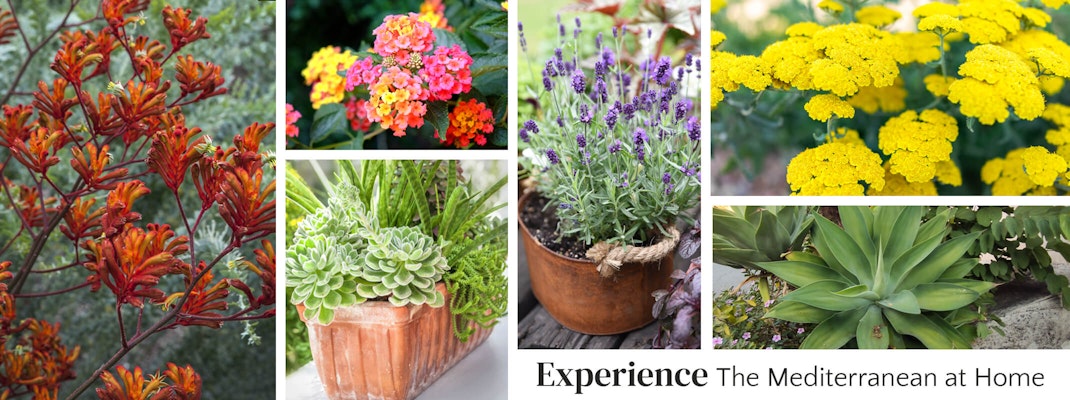
Mediterranean Climate–Inspired Gardens
Relaxed, sun-kissed, and climate-friendly. Mediterranean climate–inspired gardens celebrate plants that thrive in regions with warm, dry summers and mild, wet winters — just like much of the Bay Area. With silvery foliage, fragrant herbs, bold succulents, and colorful blooms, these gardens capture the spirit of Spain, Italy, and Greece while using plants that perform beautifully here at home.
It’s more than a look — it’s a lifestyle. These gardens are water-wise, low-maintenance, and sensory: think fragrance on warm evenings, textured foliage that stays beautiful year-round, and edible harvests right outside your door.
Why Mediterranean Style Suits Bay Area Gardens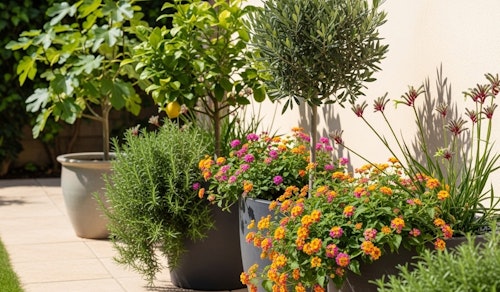
- Water-wise beauty: lush looks with lower water use.
- Year-round structure: evergreens and sculptural forms keep the garden attractive in every season.
- Sensory experience: fragrance from herbs and citrus; textures that glow in evening light.
- Homegrown abundance: olives, figs, grapes, citrus, and pomegranates bring the pantry outside.
- Pollinator friendly: salvias, oregano, lavender, and rosemary fuel bees and butterflies well into fall.
What Makes it a Mediterranean Style?
- Materials that breathe the sun: gravel paths, decomposed granite, stone walls, terracotta and glazed pottery.
- Simple structure: clipped hedges, geometric beds, and broad drifts of tough perennials.
- Sculptural accents: agaves, aloes, and urns for strong form; boulders for texture.
- Water-wise rhythm: plants chosen for drought tolerance and long seasonal color.
Flowers, Trees & Shrubs (Late Summer & Fall Standouts)
Trees
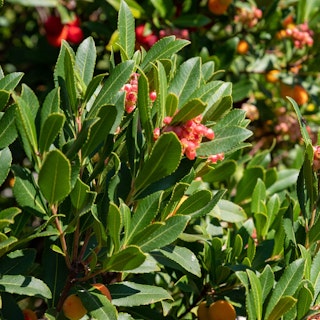
Arbutus unedo (Strawberry Tree)
Tree — Fall fruit and white blooms; handsome bark for year-round interest.
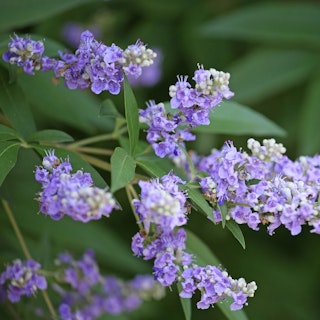
Vitex agnus-castus (Chaste Tree)
Tree — Purple summer spires; heat and drought tolerant.
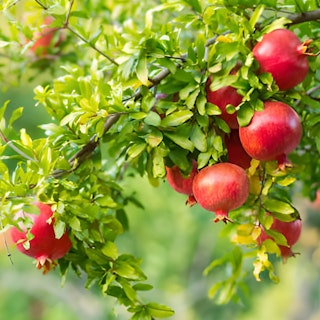
Pomegranate (Punica granatum)
Small Tree — Orange-red flowers and late-season fruit; great small tree.

Fig (Ficus carica)
Fruit Tree — Classic harvests and a Mediterranean vibe.
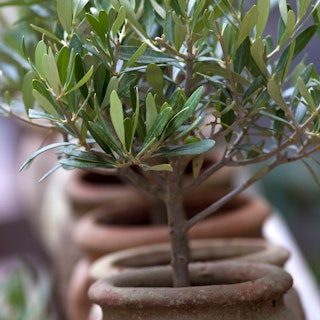
Olive (incl. dwarf ‘Little Ollie®’)
Tree — Evergreen structure; use as hedging, standards, or potted accents.
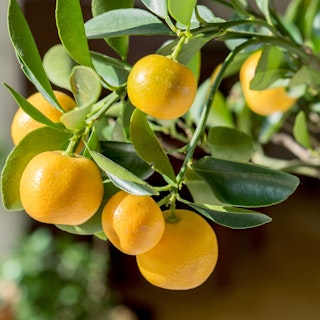
Citrus
Fruit Trees — Evergreen foliage, fragrance, and homegrown fruit; site in warm, protected spots.
Shrubs
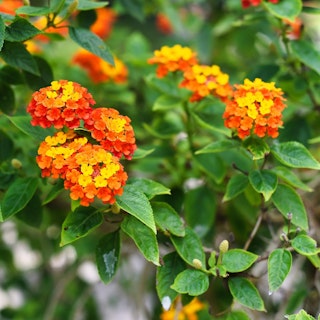
Lantana
Shrub — Vibrant color into fall; ideal for spilling over walls and pots.
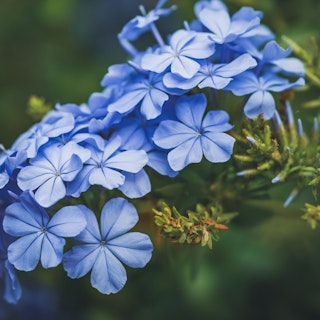
Plumbago (Plumbago auriculata)
Shrub — Sky-blue flowers late summer–fall; good over fences.
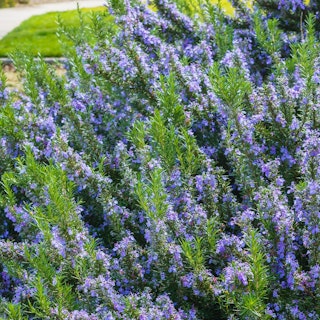
Rosemary
Shrub/Herb — Evergreen structure; bees love it; shear for low hedges.
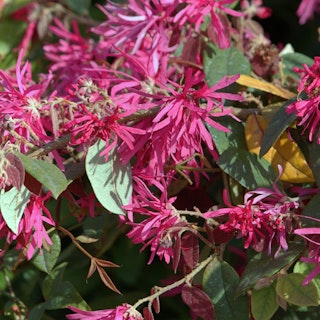
Loropetalum (Loropetalum chinense)
Shrub — Purple foliage with fringe-like pink or white blooms; evergreen, year-round color.
Perennials
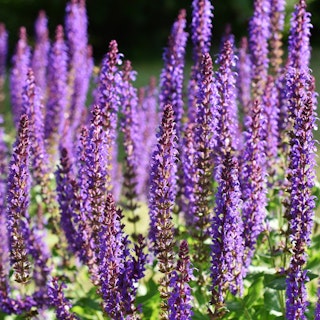
Salvias & Sages (e.g., Heatwave™ series; Salvia leucantha/Russian sage S. yangii)
Perennials — Months of color; shear lightly after a flush to extend bloom.
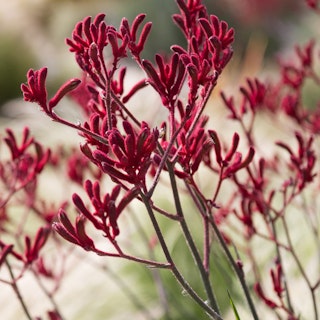
Kangaroo Paw (Anigozanthos)
Perennial — Velvety flowers in red, yellow, or pink; great in containers and sunny borders.
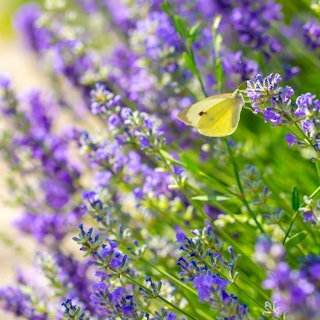
Lavender (English, French, Spanish)
Perennial and Shrub — Fragrance, pollinator appeal; prune after bloom to keep mounded.

Verbena (V. rigida, V. × hybrida) & Agapanthus
Perennials — Cheerful, long-lasting summer color.
Vines
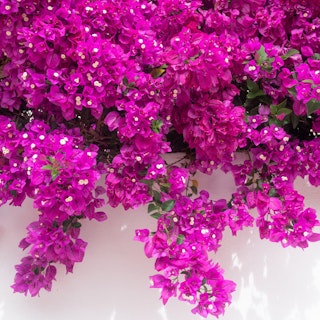
Bougainvillea
Vine/Shrub — Brilliant magenta, orange, or white bracts; vigorous for walls and containers.
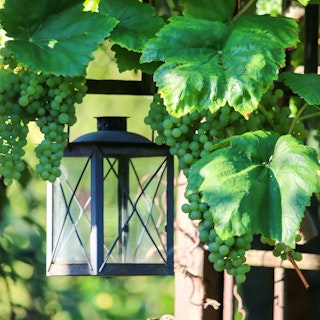
Grapes (Vitis vinifera)
Vine — Classic fruiting vine for trellises and arbors.
Succulents

Rock Purslane (Calandrinia spectabilis)
Perennial Succulent — Gray-green foliage with bright magenta flowers spring–fall; thrives in heat and lean soils.
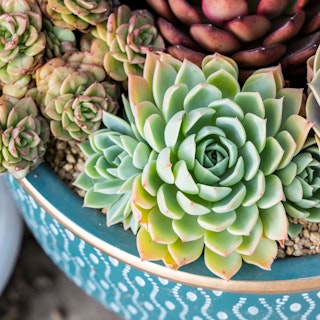
Succulents & Agaves
Succulents — Architectural, ultra-low water; mix heights and rosette forms for drama.
Grasses

Ornamental Grasses
Perennial Grasses — Blue fescue, Lomandra, Purple fountain grass for movement and contrast through fall.
How to Plant & Care (Quick Guide)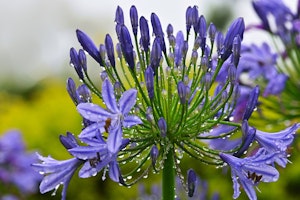
- Sun & drainage: choose the sunniest spot (6+ hours). Improve drainage with raised beds, berms, or gravelly amendments.
- Watering: water deeply but infrequently once established; group plants by water needs.
- Pruning: shear lavenders and salvias after bloom; lightly shape hedging shrubs late winter.
- Feeding: go light—compost or low-nitrogen fertilizer in spring. Use low-phosphorus fertilizer for Australian natives like grevillea or banksia.
- Mulch: gravel or stone mulch reflects heat and reduces evaporation; organic mulch for fruit trees.
Container Ideas
- Dwarf Olive + Trailing Rosemary + White Alyssum — formal lines with fragrance and evergreen appeal.
- Succulents + Blue Fescue + Agave — bold, textural, and modern in terracotta.
- Bougainvillea + Lantana + Verbena — a cascade of color for sunny patios.
- Citrus Tree + Lavender + Nasturtiums — productive, fragrant, and pollinator-friendly.
Tip: Terracotta, glazed pottery, and stone containers echo the timeless Mediterranean look.
Bay Area Adaptations
- Match microclimate: coastal areas favor wind-tolerant, salt-spray-friendly choices (rosemary, lavender, germander); hotter inland sites suit salvias, lantana, agaves, and vitex.
- Establish smartly: plant in fall to take advantage of winter rains and stronger roots by summer.
- Be deer-savvy: lavender, rosemary, santolina, and many agaves are typically deer-resistant.
- Blend edibles and ornamentals: combine olives, citrus, figs, and pomegranates with herbs and flowering perennials for beauty and utility.
Visit one of our Bay Area locations today and start building your Mediterranean Climate inspired garden.

